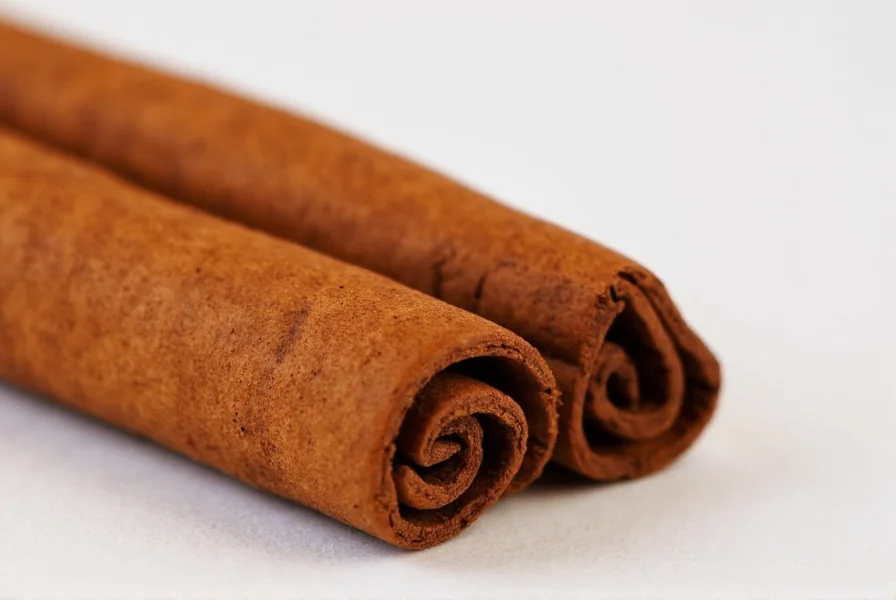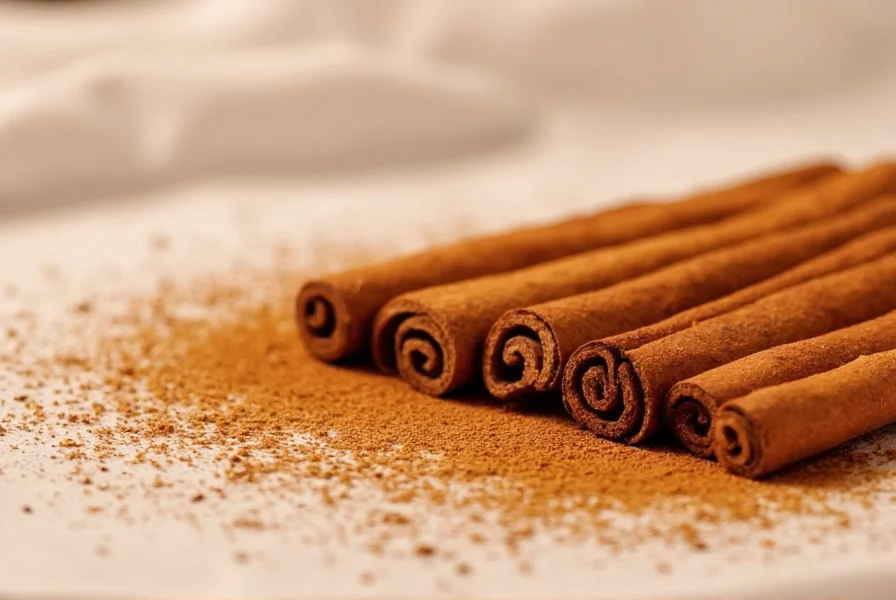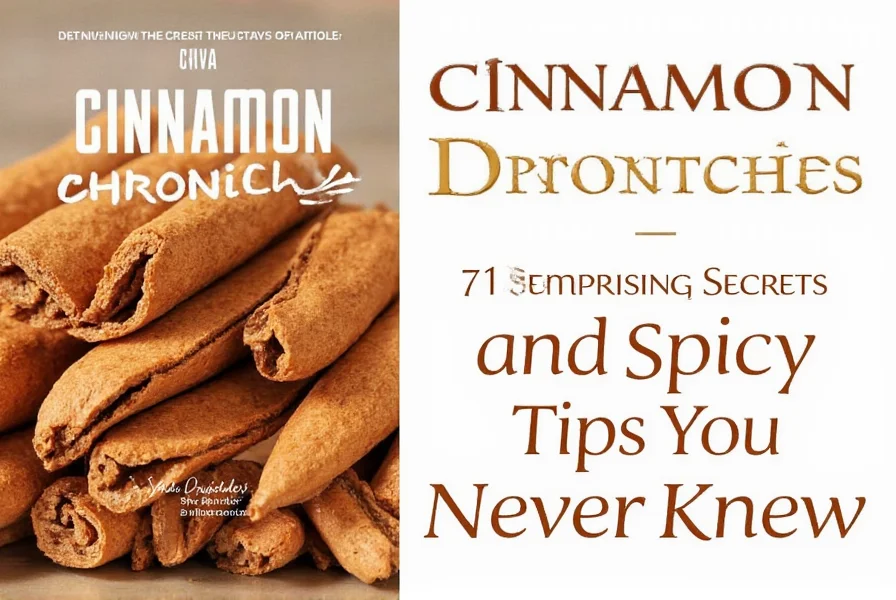Introduction
Cinnamon is a widely used spice with scientifically studied health benefits, but it's crucial to understand evidence-based facts for safe usage. This guide provides accurate information on cinnamon's effects on blood sugar, heart health, and the critical differences between Ceylon and Cassia varieties. Always consult healthcare professionals before using cinnamon for medical purposes.

Ceylon vs Cassia Cinnamon: Key Differences
Understanding the two main cinnamon types is essential for safe consumption, especially for health-related uses. Here's a detailed comparison:
| Type | Origin | Flavor Profile | Texture | Coumarin Content | Best For |
|---|---|---|---|---|---|
| Ceylon Cinnamon | Sri Lanka | Mild, sweet, complex | Thin, papery layers | Very low (0.004-0.05%) | Daily health use, desserts |
| Cassia Cinnamon | China/Indonesia | Strong, spicy, slightly bitter | Thick, rough bark | High (0.5-1.2%) | Occasional cooking, savory dishes |

According to the European Food Safety Authority (EFSA), Cassia cinnamon's coumarin content poses liver toxicity risks with regular high consumption. Ceylon is the safer choice for daily health purposes.
Science-Backed Health Benefits
Research shows cinnamon has potential health benefits, but evidence quality varies. Key findings include:
- Blood sugar control: A 2013 meta-analysis in the Journal of Diabetes Science and Technology found cinnamon may reduce fasting blood glucose by up to 29% in type 2 diabetes patients, though results are inconsistent. The American Diabetes Association states cinnamon is not a substitute for diabetes medication.
- Heart health: Studies in the Journal of the American College of Nutrition suggest cinnamon may lower LDL cholesterol and triglycerides, but effects are modest and require more research.
- Antioxidant properties: Cinnamon contains polyphenols that combat oxidative stress, though dietary amounts may not provide significant therapeutic benefits.

Important safety note: The National Institutes of Health (NIH) warns that high-dose cinnamon supplements can interact with blood thinners and medications for liver conditions. Always discuss with your doctor before using cinnamon therapeutically.
Safe Culinary Usage Guidelines
For most people, using cinnamon in cooking is safe. Here's how to use it wisely:
Sweet Applications
- Use Ceylon cinnamon for daily consumption in oatmeal or baked goods (1/2 tsp max per serving)
- For occasional treats like cookies or coffee, Cassia is acceptable but limit to 1 tsp per day
- Avoid cinnamon supplements unless prescribed by a healthcare provider
Savory Applications
- Moroccan tagines: Use 1/4 tsp Cassia for 4 servings
- Chili con carne: Add 1/2 tsp ground cinnamon to 6 servings
- Roasted vegetables: Sprinkle 1/4 tsp Ceylon cinnamon per serving

How to Choose Cinnamon Safely
When purchasing cinnamon, prioritize safety over brand names:
| Form | Best Practices | Safety Notes |
|---|---|---|
| Ground Cinnamon | Check for "Ceylon" labeling on packaging | Ground cinnamon loses potency faster; store properly |
| Cinnamon Sticks | Look for light tan color (Ceylon) vs reddish-brown (Cassia) | Sticks retain flavor longer; easier to identify type |
| Supplements | Avoid unless medically supervised | Supplements often contain high coumarin levels |

Key tip: The U.S. Food and Drug Administration (FDA) does not regulate cinnamon supplements. Always choose products with third-party testing certifications like NSF or USP.
Proper Storage for Safety and Quality
- Store ground cinnamon in airtight containers away from light and heat
- Keep cinnamon sticks in cool, dry places (freezer for long-term storage)
- Replace ground cinnamon every 6 months; sticks last up to 3 years
- Test freshness by smell: Fresh cinnamon should have a strong, sweet aroma

Expert-Verified FAQs
Is cinnamon safe for people with diabetes?
According to the American Diabetes Association, cinnamon may help with blood sugar management but should not replace medication. Studies show mixed results, and effects vary by individual. Always consult your endocrinologist before adding cinnamon to your diabetes management plan.
How much cinnamon is safe to consume daily?
The European Food Safety Authority recommends a maximum daily coumarin intake of 0.1 mg per kg of body weight. For Cassia cinnamon (high coumarin), this equals about 1/2 tsp per day for a 150lb person. Ceylon cinnamon (low coumarin) can be consumed up to 1 tsp daily. People with liver conditions should avoid Cassia entirely.
Does cinnamon help with weight loss?
There's no strong scientific evidence that cinnamon directly causes weight loss. Some studies suggest it may help regulate blood sugar, which could indirectly support weight management, but it's not a weight loss solution. Focus on proven methods like balanced diet and exercise.
Can cinnamon interact with medications?
Yes. Cinnamon may interact with blood thinners (like warfarin), diabetes medications, and liver-metabolized drugs. The National Institutes of Health reports potential interactions that could increase bleeding risk or affect medication effectiveness. Always check with your pharmacist before combining cinnamon with medications.
How to identify Ceylon vs Cassia cinnamon?
Ceylon cinnamon sticks are thin, layered, and light tan with a delicate aroma. Cassia sticks are thick, single-layered, and reddish-brown with a stronger smell. Ground cinnamon is harder to distinguish; look for "Ceylon" labeling on packaging. When in doubt, choose Ceylon for daily health use due to lower coumarin content.
Conclusion: Using Cinnamon Safely and Effectively
Cinnamon offers potential health benefits when used correctly, but scientific evidence varies by application. For daily consumption, Ceylon cinnamon is safer due to its low coumarin content. Always prioritize evidence-based information over anecdotal claims, and consult healthcare professionals for personalized advice—especially for medical conditions. Remember: cinnamon is a spice, not a medicine, and should be used as part of a balanced diet.












 浙公网安备
33010002000092号
浙公网安备
33010002000092号 浙B2-20120091-4
浙B2-20120091-4